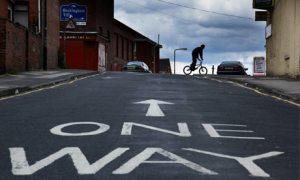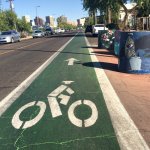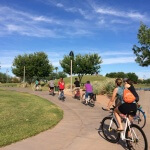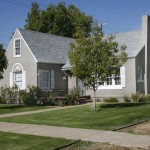A shift is happening. Look around you. Collaborative movements are spreading across the globe. With the instantaneous communication environment we now live in, efforts to bring people together are being supported in rapid-fire succession.
It’s the idea of collaborative communities: organizing people in such a way that they can connect and engage together more effectively by sharing resources and strengthening social ties. A great website that highlights this is Collaborative Consumption. As I’ve been venturing via bike across Phoenix and Tempe, I’ve noticed the shift. Whether it’s helping with Valley of the Sunflowers, biking co-ops, or Audubon’s conservation efforts, communities are indeed connecting with one another and uniting on issues that matter. Whatever the cause, people are there making an impact.
Collaborative Consumption Groundswell Video from rachel botsman on Vimeo.
Technology has a huge role in this movement. Want to be involved in the Willo Historic District? There’s an email newsletter for that. Training for P.F. Chang’s Marathon? There’s an online meet-up group
for that. Volunteering opportunities at the Roosevelt Row Growhouse garden? There’s a blog, online news articles, and Facebook events for that. Even these cool kids at Co+Hoots, a collaborative workspace environment, seem to be in the know with co-working magic. (Read more here) All these people are coming together to make REAL change and it’s incredibly simple to get involved. Collaboration at your fingertips.
Yet, collaboration brings some interesting challenges. As more and more people are coming together, the dire need for easy accessibility rises. Some urban cities are paving the way, literally, to make accessibility a reality.

Eugene, Oregon
Take Copenhagen for example. It is the largest city in Denmark, home to approximately 1.2 million people in the metro area (200,000 shy of Phoenix’s population), with one-third of those people riding bikes. Highlighted as one of the most bike-friendly cities in the world, Copenhagen has an urban infrastructure that supports a connected lifestyle. A big attribute to this movement is the introduction to the Bike Sharing System, which allows riders to pay a deposit (which they get back) to rent the bike as needed. Eugene, Oregon is also known for its pedestrian-friendly efforts, quoted by Bicycling Magazine as one of the top ten cycling communities in the United States.
While Phoenix doesn’t have a bike-sharing system (yet), we still have a rich, diverse community who seek to connect. As a community, we can support change and enhancement of the physical structure in order to accommodate more bike and pedestrian-friendly access. However, we need to shift the way we think. Which brings the question: Why collaborate?
Supporting a more collaborative lifestyle increases your access to valuable resources, whether that’s access to local foods and gardens, carpooling options to get the kids to soccer or reducing the spouse’s long work commute, to simply connecting with your neighbors and getting involved in the area where you live. In 2011, I don’t think of knocking on the neighbor’s door as a 1950’s kind request for sugar; I think of it a genuine desire to connect, letting my neighbor’s know they are welcomed and my resources are available to them.
The days of not trusting your neighbor are slowly dissolving with neighborhoods that reflect this collaborative model. It builds trust, which then allows communication to flow. The Willo Historic District newsletter, for example, is keeps its readers on alert for suspicious activities, building that sense of trust and security. This is part of the collaborative mindset. Uniting communities together says, “This place matters and I want to be a part of it.” With that type of mindset, anything is possible.






